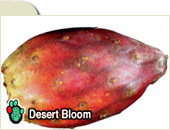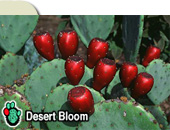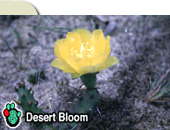Introduction
 Traditional Latin American practice has utilized medicinal plants to control a
variety of human illnesses. Nopal has been regarded as a medicinal plant
since the times of the indigenous empires of the Americas, particularly among
the native Nahutal population of Mexico. Ancestral knowledge
has culminated in utilizing nopal to treat Diabetes Mellitus as well as to
regulate cholesterol levels . The hypoglycemic effect of
Opuntia has been validated in various experimental and clinical investigations.
Chemical studies attempting to identify, isolate, and purify the substances
responsible for the hypoglycemic activity of the prickly pear cactus are the
subject of on-going research. The exact mechanism whereby the positive benefits
of Nopal are achieved, however, remains unclear. Dietary fibers have been shown
to decrease plasma cholesterol concentrations in humans and in serveral animal
species, having a protective effect on heart disease. Soluble fibers, including
pectin, positvely affect cholesterol absoption and hepatic cholesterol
homeostasis.
Traditional Latin American practice has utilized medicinal plants to control a
variety of human illnesses. Nopal has been regarded as a medicinal plant
since the times of the indigenous empires of the Americas, particularly among
the native Nahutal population of Mexico. Ancestral knowledge
has culminated in utilizing nopal to treat Diabetes Mellitus as well as to
regulate cholesterol levels . The hypoglycemic effect of
Opuntia has been validated in various experimental and clinical investigations.
Chemical studies attempting to identify, isolate, and purify the substances
responsible for the hypoglycemic activity of the prickly pear cactus are the
subject of on-going research. The exact mechanism whereby the positive benefits
of Nopal are achieved, however, remains unclear. Dietary fibers have been shown
to decrease plasma cholesterol concentrations in humans and in serveral animal
species, having a protective effect on heart disease. Soluble fibers, including
pectin, positvely affect cholesterol absoption and hepatic cholesterol
homeostasis.
Background
The prickly pear cactus is known as nopal in Mexico and belongs to
the genus Opuntia.
-
Scientific Name
Opuntia Ficus-Indica.
-
Common Name
Prickly pear cactus
-
Plant Description
Succulent with flattened stems; leaves lacking or modified into large spines;
sharp-pointed glochids in clusters at base of spines; flowers variously
colored, with many petals; fruit is fleshy or sweet tasting.
-
Where Found
Nopal is a member of the Prickly Pear cactus family, native to
Mexico and the southwestern regions of the United Statesl. It is
also found in Italy, Spain & South Africa, where it was imported during the
Spanis conquest of the New World.
What does it
do?
Studies show Nopal is a valuable
health supporting nutrient that helps support immune, glandular, nervous,
circulatory, respiratory and digestive systems.
 1. Blood Sugar Regulation for Diabetes Mellitus
1. Blood Sugar Regulation for Diabetes Mellitus
Nopal's 18 amino acids, provide nutrition and help the body lower
excessive blood sugar. Nopal strengthens the liver & pancreas
thereby increasing sensitivity to insulin which stimulates the movement of
glucose from the blood into body cells where it is used as energy. It
also slows the digestion of carbohydrates.
2. Nutrition
In comparison with other plants, Nopal is high in nutrients that strengthen
the liver and the pancreas; the health of these two glands being vitally
important to the conversion of carbohydrate sugars into stored glycogen useable
as energy by the body, the production of insulin and the sensitivity of body
cells to insulin which is necessary to move glucose from the blood stream into
body cells where it is used as energy.
Vitamins found in Nopal (A,
B1, B2, B3, and C), minerals (Calcium, Magnesium, Sodium, Potassium, and Iron)
and fibers (Lignan, Cellulose, Hemicellulose, Pectin, Mucilages, and Gum),
along with the 18 amino acids also found in Nopal help to detoxify and support
the functions of the liver and pancreas, while improving body cell response to
insulin stimulation.
 3.
Digestive System
3.
Digestive System
The active ingredients found in Nopal aid in
preventing the digestive system from absorbing excess dietary fat and
carbohydrate sugars, thereby maintaining proper blood sugar balance and helping
to control obesity.
Soluble fibers (including gums, mucilages, pectins and
polysaccharides) show the absorption of glucose in the intestines. Insoluble
fibers (more commonly known as roughage), reduce excess bile and potential
carcinogens (cancer causng agents) that may be present in the colon, by
absorption and excretion. As a fibrous plant, Nopal contains high levels of
both soluble and insoluble dietary fibers. Soluble fibers present in Nopal
include mucilages, pectin, gums and som hemicellulose. Insoluble fibers include
cellulose, lignan and remaining hemicellulose. Nopal is a gentle alternative to
psyllium (a well-known fiber supplement taken for colon cleansing) for those
with a sensitivity or allergy to psyllium.
Vegetable protein found in
Nopal (amino acids) help the body pull fluids from body tissues back into the
bloodstream thereby diminishing cellulite and fluid retention. Fat build up is
prevented, while fat break down and excretion is increased. The pectin and
lignan found in Nopal are also known for increasing satiety (decreasing
appetite). These are important factors in controlling obesity .
4.  Immune System
Immune System
As indicated above, phytochemicals are powerful allies fo the body's immune
system, allowing it to defend the body against pathogens. Recent studies have
found that among the phytochemicals found in Nopal are the types that inhibit
cancerous cell growth and may even help prevent cancer from developing. Animal
studies corroborate this, showing that dosages of Nopal Juice increase immune
system efficiency in controlling tumor growth, Epstein-Barr virus and
suppressed immune response.
5. Circulatory System
As demonstrated by hospital studies (see Scientific Studies in this
website), Nopal acts in several ways that have been found to reduce the risk of
heart disease. First, the fiber found in Nopal acts to absorb and excrete
cholesterol in the digestive system. Second, the amino acids, fiber and B3
(niacin) found in Nopal prevent excess sugar coversions into fats, while
reducing triglyceride and LDL cholesterol levels, by metabolizing fat and fatty
acids and eliminating excess bile acids which eventually convert into
cholesterol. Third, the B3 (niacin) in Nopal acts to convert LDL (bad)
cholesterol to HDL (good) forms of cholesterol. Additionally, the amino acids
and fiber, together with the anti-oxidant effect of the vitamin C and vitamin A
(B-carotene) found in Nopal, aid in preventing blood vessel wall damage and the
formation of fatty plaques in the arteries (arteriosclerosis).
6. Urinary System
 The juice of Nopal is used in Mexico as an anti-inflammatory diuretic and
to decrease pain on or following urination. These effects derive from
bioflavonoids, amino acids and fiber in Nopal.
The juice of Nopal is used in Mexico as an anti-inflammatory diuretic and
to decrease pain on or following urination. These effects derive from
bioflavonoids, amino acids and fiber in Nopal.
7. Nervous System
Nopal helps prevent diabetic Neuropathy (nerve damage) and aids in
balancing and calming the nervous system, which creates a sense of well being
and benefits the body's overall function.
8. Phytochemicals
Phytochemicals found in plants (also
known as 'functional foods' and 'Neutriceuticals') act in four basic ways
to promote health and assist the human body resist disease:
One
group act as 'Antioxidants' in eradicating oxygen deficient molecules
known as 'free radicals' which, if not eliminated, cause cell damage that
can lead to diabetes, cancer, heart disease, arthritis and other
disorders.
A second group act as 'Detoxifiers' by
supporting normal processes that allow the human body to recognize and
destroy or eliminate toxic substances ingested or produced by the human
body.
A third group act as 'hormone Modulators' by
triggering needed harmone production (such as insulin) and by substituting
harmless harmone-like substances (such as phytoestrogens) for over-acting
natural harmones and/or reducing the production of excess harmones by the
human body. Excess hormones can trigger cellar damage leading to various
types of cancers.
A fourth group act as 'Cell Regulators' by
assisting the human body control the rampant growth characteristics of
tumors.
Nopal has been found to contain many of these
phytochemicals in quantities greater than is found in more well-recognized
plants
.
9. Amino acids, vitamin & minerals
 Amino acids are the chief structure of proteins and are involved in a wide
range of beneficial functions such as stimulating the immune system,
maintenance of proper blood sugar balance and control of anxiety and
depression. Nopal is a natural source of 18 Amino acids, 8 of which must be
ingested as food. Vitamins A, E, and C act as antioxidants. Vitamin B (niacin)
lowers cholesterol and B12 protect against atherosclerosis. Vitamin E helps
prevent blood clots and the formation of fatty plaques on the walls of the
arteries and helps counteract nerve damage associated with adult-onset
diabetes. Folic acid reduces risk of stroke and together with B12 help prevent
cells from becoming malignant. Nopal is an excellent source of these important
vitamins in a natural form. A primary role of minerals is to serve as
facilitators of the many types of metabolism that are necessary to the proper
functioning of all human body systems. For example, iron is necessary for
protein metabolism and plays a role in immune system resistance. Potassium
prevents impaired glucose tolerance and impaired insulin secretion. Selenium is
an anti-oxidant and preserves tissue elasticity. Additionally, minerals play
special roles; such as calcium in the building of strong bones and teeth. Nopal
is an excellent source of 10 essential minerals.
Amino acids are the chief structure of proteins and are involved in a wide
range of beneficial functions such as stimulating the immune system,
maintenance of proper blood sugar balance and control of anxiety and
depression. Nopal is a natural source of 18 Amino acids, 8 of which must be
ingested as food. Vitamins A, E, and C act as antioxidants. Vitamin B (niacin)
lowers cholesterol and B12 protect against atherosclerosis. Vitamin E helps
prevent blood clots and the formation of fatty plaques on the walls of the
arteries and helps counteract nerve damage associated with adult-onset
diabetes. Folic acid reduces risk of stroke and together with B12 help prevent
cells from becoming malignant. Nopal is an excellent source of these important
vitamins in a natural form. A primary role of minerals is to serve as
facilitators of the many types of metabolism that are necessary to the proper
functioning of all human body systems. For example, iron is necessary for
protein metabolism and plays a role in immune system resistance. Potassium
prevents impaired glucose tolerance and impaired insulin secretion. Selenium is
an anti-oxidant and preserves tissue elasticity. Additionally, minerals play
special roles; such as calcium in the building of strong bones and teeth. Nopal
is an excellent source of 10 essential minerals.
10. Weight Loss
Nopal is a natural aid in losing
weight. It's high fiber content curbs the appetite and fat build up is
diminished while fat break down and excretions are increased. Nopal offers
vegetable protein that helps the body pull fluids back from the tissues
into the bloodstream, thereby diminishing cellulite and fluid
retention.
.
11. Cholesterol Regulation
 Nopal's amino acids, fiber and Vitamin B3 prevent excess blood sugar
conversion into fat, reduces the total cholesterol, triglyceride and LDL
cholesterol levels by metabolizing fat and fatty acids and eliminating excess
bile acids. Excess bile acids are eventually converted into cholesterol.
Other research studies show the B3 (niacin) in Nopal, aid in the conversion of
LDL (bad) into HDL (good) forms of cholesterol, which help decrease the
risk of heart disease.
Nopal's amino acids, fiber and Vitamin B3 prevent excess blood sugar
conversion into fat, reduces the total cholesterol, triglyceride and LDL
cholesterol levels by metabolizing fat and fatty acids and eliminating excess
bile acids. Excess bile acids are eventually converted into cholesterol.
Other research studies show the B3 (niacin) in Nopal, aid in the conversion of
LDL (bad) into HDL (good) forms of cholesterol, which help decrease the
risk of heart disease.